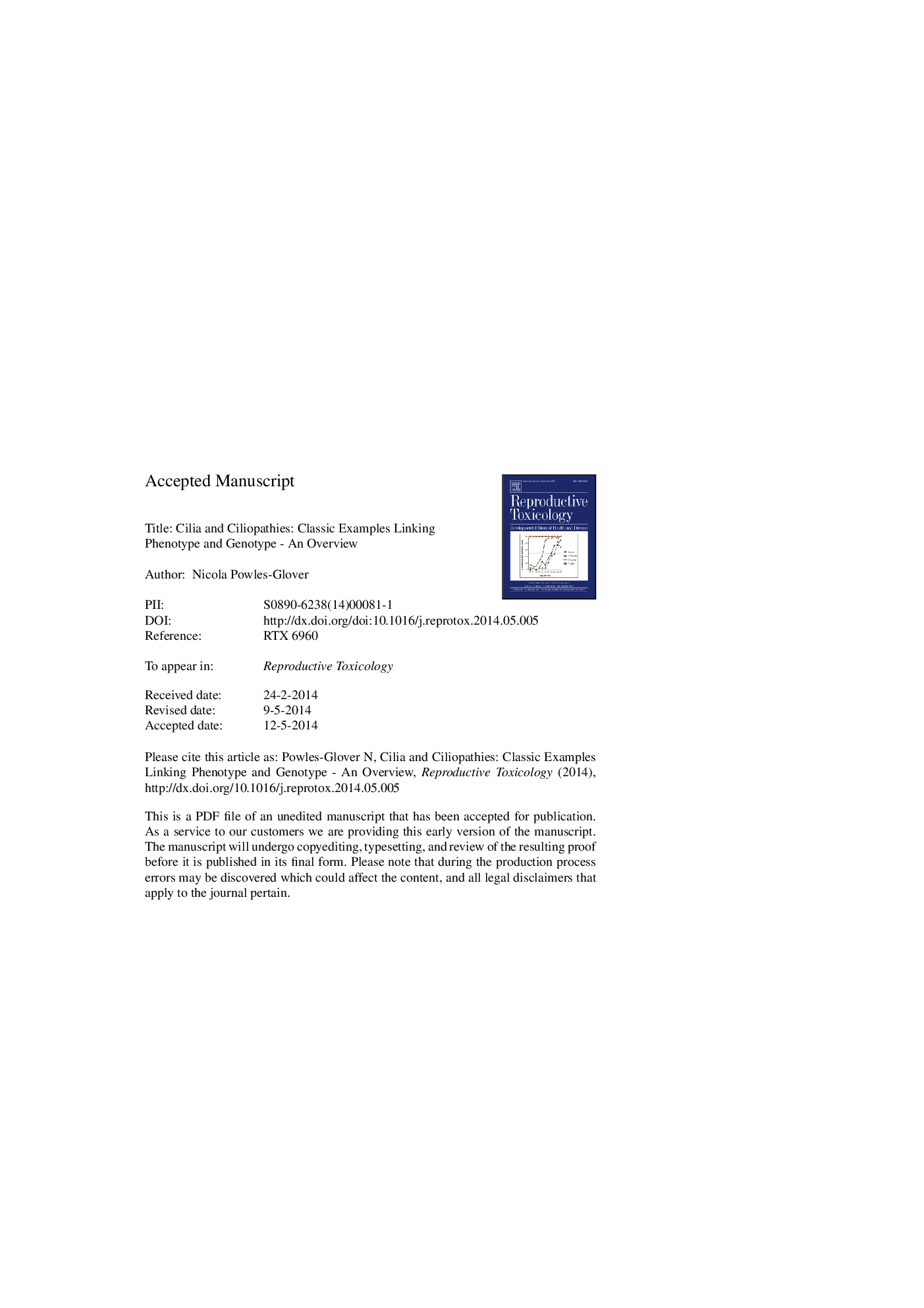| Article ID | Journal | Published Year | Pages | File Type |
|---|---|---|---|---|
| 5858586 | Reproductive Toxicology | 2014 | 30 Pages |
Abstract
The importance of the role of cilia in pre and post natal development has been appreciated since the previous century. However, a better understanding of the physiological and, conversely, dysfunctional role that cilia have in developmental disease is still emerging. Dysfunctioning cilia can lead to diseases with a remarkable spectrum of phenotypes ranging from embryofetal lethality, through “classic” organ malformation to severe loss of function that leads to diseases during infancy or more subtle loss of function that may not become apparent until adulthood. Collectively, these diseased are termed ciliopathies. A shift in the focus of research by using tools and models that highlight the similarity between the genetics of mice, zebrafish and human cells, is starting to form an interesting mechanistic picture of how cilia have a role in the developmental pathologies and human diseases. Some of the underlying cellular principles, implicated genes and, where possible, mechanisms will be briefly described in this manuscript and there are several more detailed reviews available [Quinlan et al, 2008; Veland et al, 2009 and Norris and Grimes, 2013].
Related Topics
Life Sciences
Environmental Science
Health, Toxicology and Mutagenesis
Authors
Nicola Powles-Glover,
